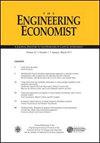Ex post evaluation of PPP government-led renegotiations: Impacts on the financing of road infrastructure
IF 1.2
4区 经济学
Q4 BUSINESS
引用次数: 10
Abstract
Abstract Renegotiations are often claimed to be the major pitfall in public–private partnership projects. In fact, the literature and empirical evidence suggest a bias toward favoring concessionaires, although there are well-known examples of harmful unilateral decisions by governments. This article establishes a distinction between structural renegotiations (with changes in the risk-sharing agreement) and nonstructural renegotiations (without shifting risk) and analyzes the implications of structural renegotiations in a road concession by comparing the ex ante and ex post financial implications for government, concessionaire, and users. The selected project is one that started as a shadow toll and was later changed to real toll. The analysis shows that the renegotiation essentially transferred costs to the users. The financial burden for the government decreased and the internal rate of return (IRR) of the concessionaire increased slightly although the overall risk profile of the concession decreased. The users supported a 40% higher cost, and the system gained an additional cost component (the electronic tolling system). Overall the global financial costs increased 40% when compared with the initial regime. The article also sets out some discussions and implications for policymakers.PPP政府主导的重新谈判的事后评估:对道路基础设施融资的影响
摘要重新协商经常被认为是公私合作项目中的主要陷阱。事实上,文献和经验证据表明,人们倾向于偏袒特许经营者,尽管政府单方面做出有害决定的例子是众所周知的。本文区分了结构性重新谈判(风险分担协议发生变化)和非结构性重新协商(风险不转移),并通过比较对政府、特许公司和用户的事前和事后财务影响,分析了道路特许权中结构性重新谈判的影响。所选项目最初是影子收费,后来改为实际收费。分析表明,重新谈判实质上将成本转移到了用户身上。尽管特许权的总体风险状况有所下降,但政府的财政负担有所减轻,特许公司的内部收益率略有上升。用户支持高出40%的成本,系统获得了额外的成本组成部分(电子收费系统)。总体而言,与最初的制度相比,全球金融成本增加了40%。文章还阐述了一些讨论以及对政策制定者的启示。
本文章由计算机程序翻译,如有差异,请以英文原文为准。
求助全文
约1分钟内获得全文
求助全文
来源期刊

Engineering Economist
ENGINEERING, INDUSTRIAL-OPERATIONS RESEARCH & MANAGEMENT SCIENCE
CiteScore
2.00
自引率
0.00%
发文量
14
审稿时长
>12 weeks
期刊介绍:
The Engineering Economist is a refereed journal published jointly by the Engineering Economy Division of the American Society of Engineering Education (ASEE) and the Institute of Industrial and Systems Engineers (IISE). The journal publishes articles, case studies, surveys, and book and software reviews that represent original research, current practice, and teaching involving problems of capital investment.
The journal seeks submissions in a number of areas, including, but not limited to: capital investment analysis, financial risk management, cost estimation and accounting, cost of capital, design economics, economic decision analysis, engineering economy education, research and development, and the analysis of public policy when it is relevant to the economic investment decisions made by engineers and technology managers.
 求助内容:
求助内容: 应助结果提醒方式:
应助结果提醒方式:


